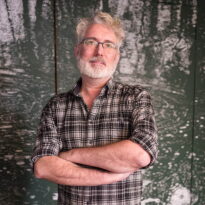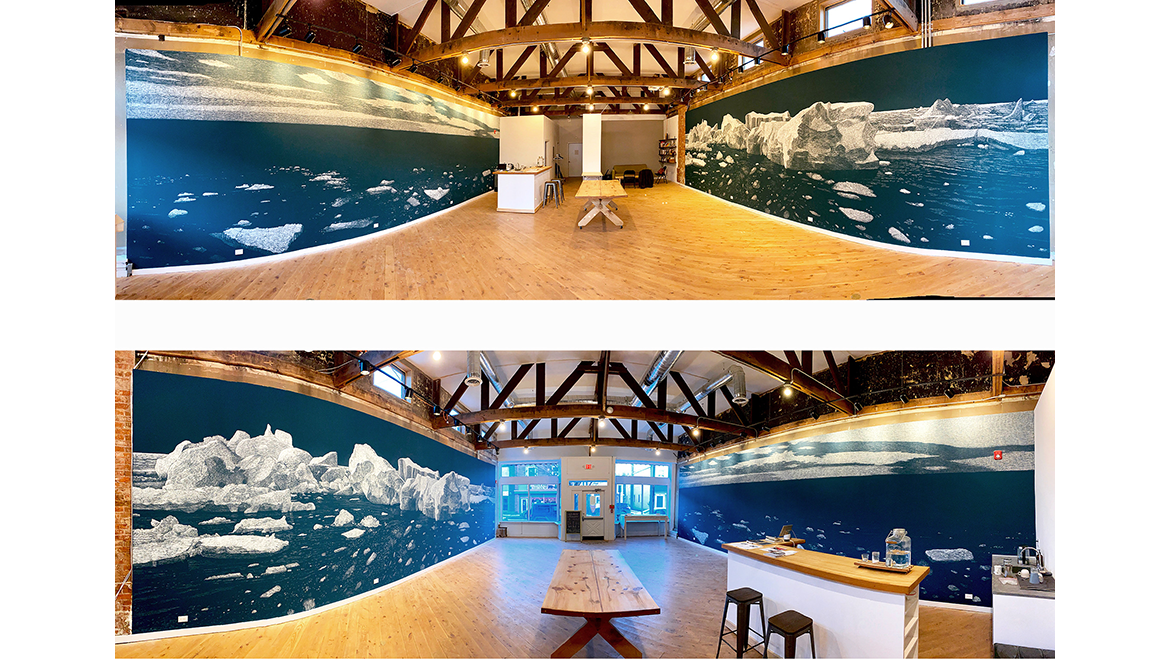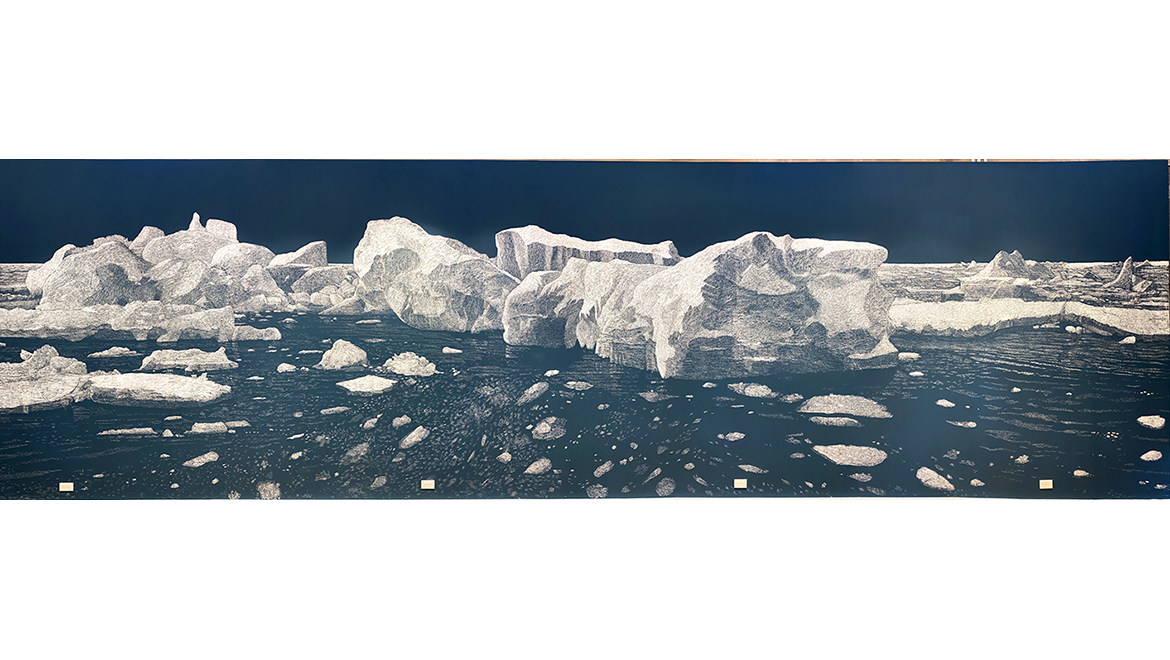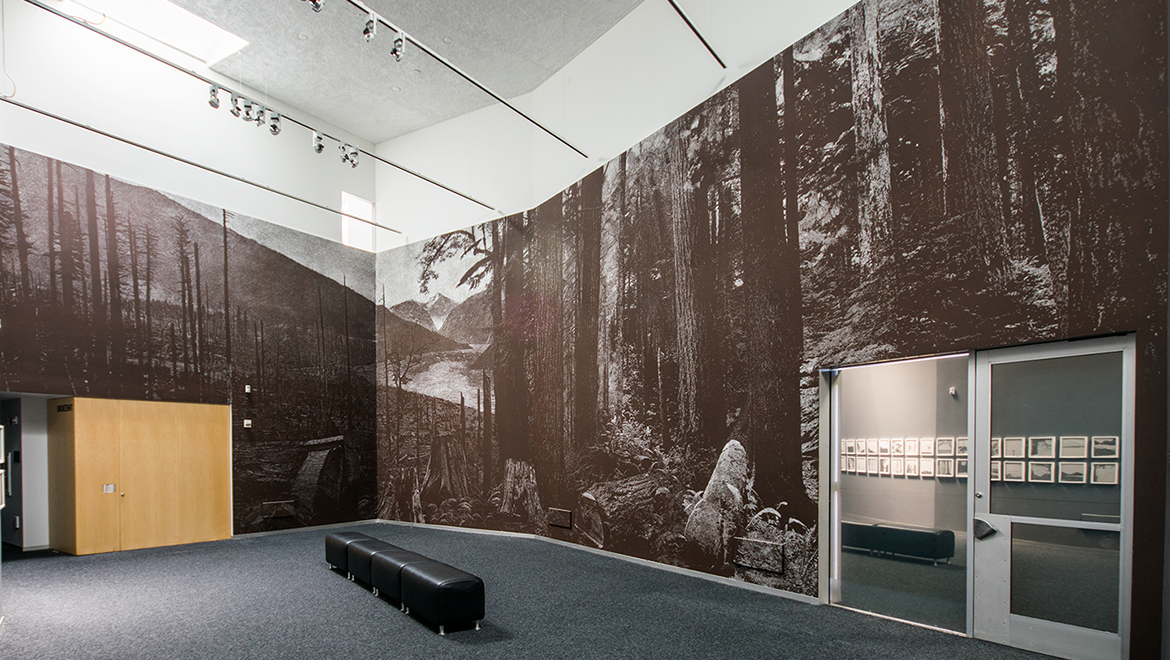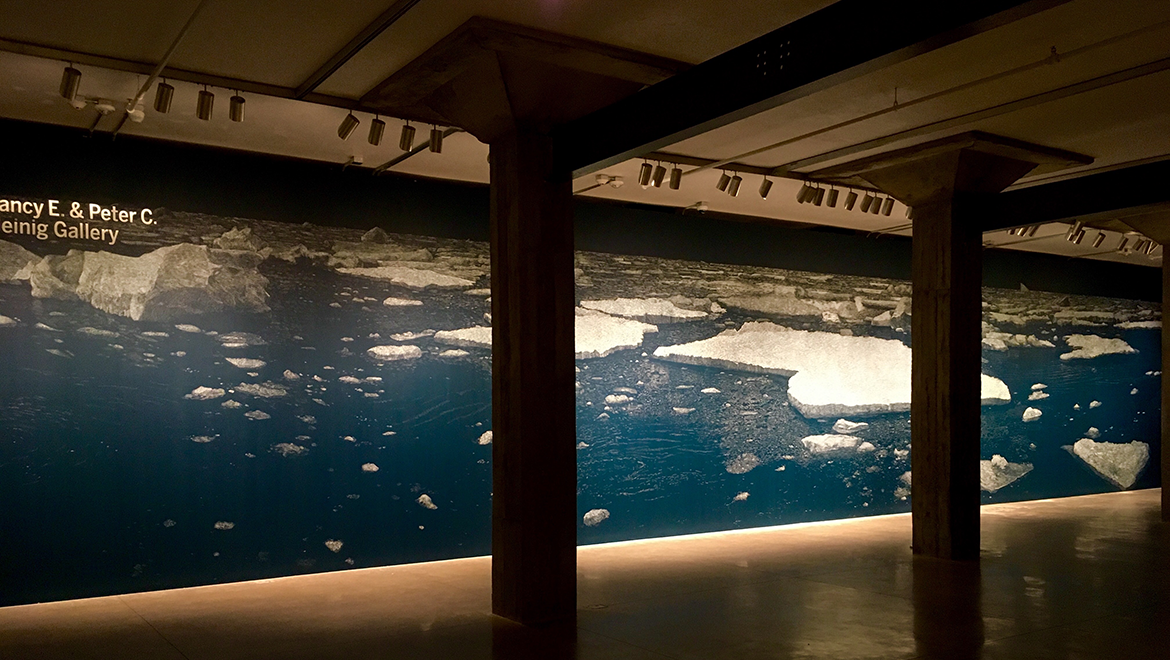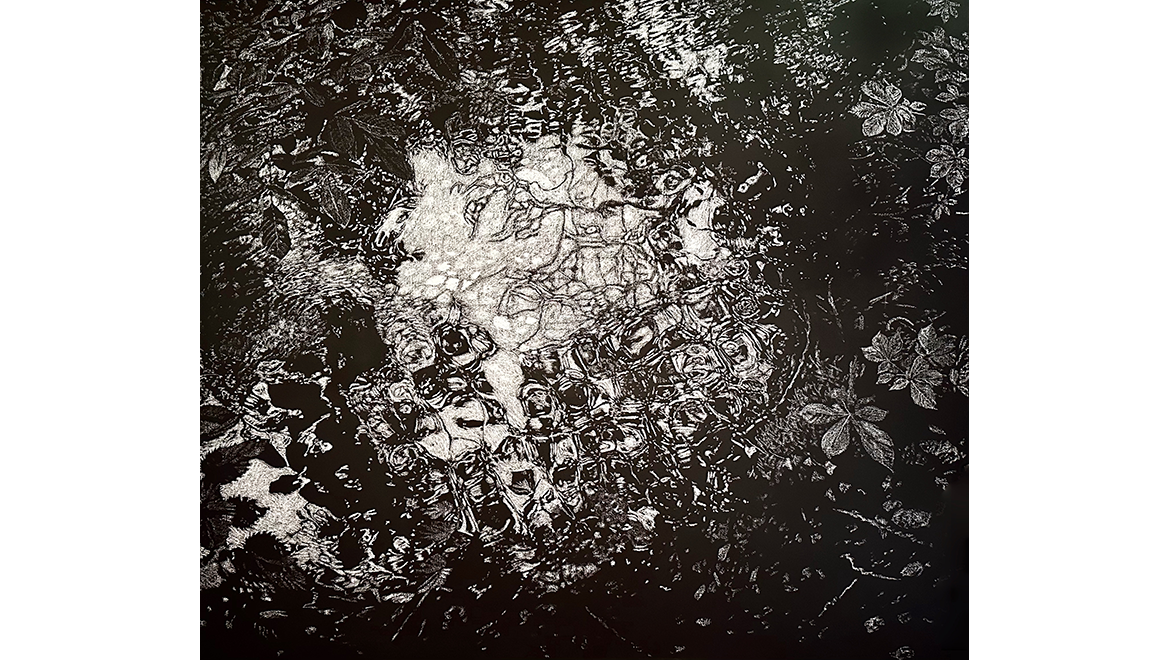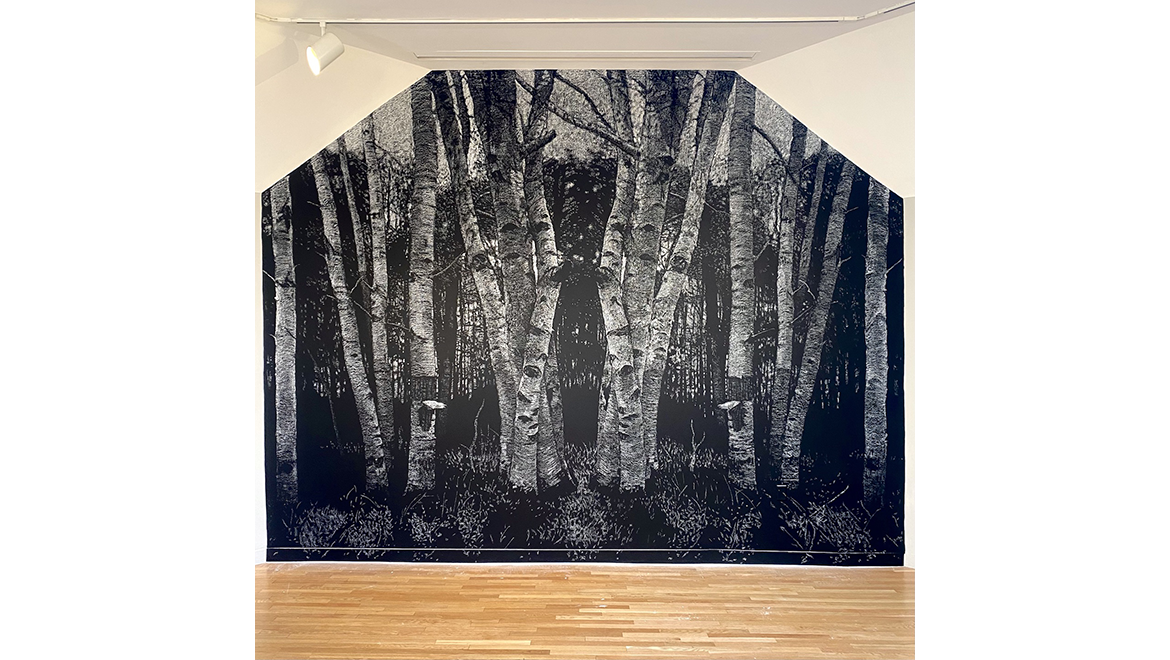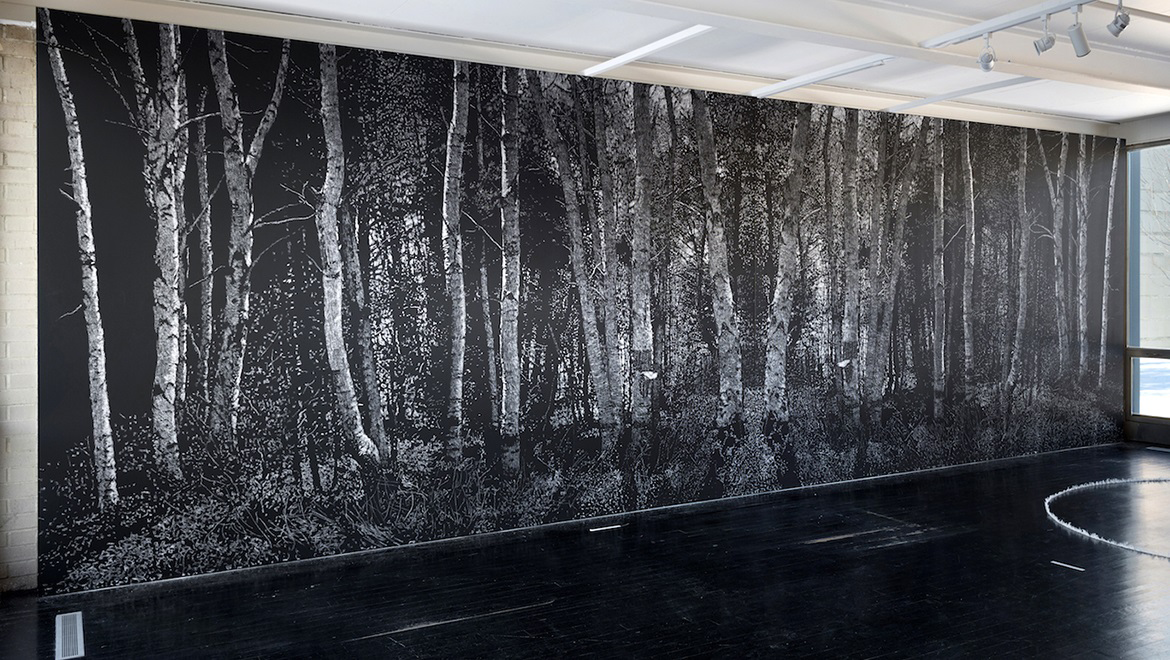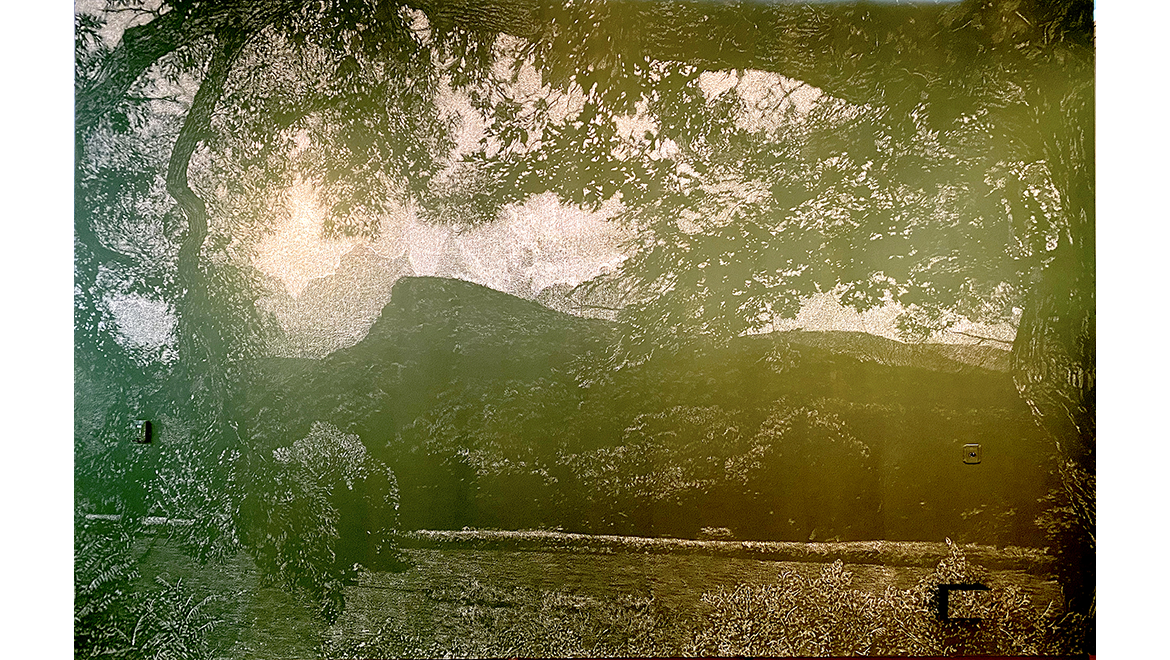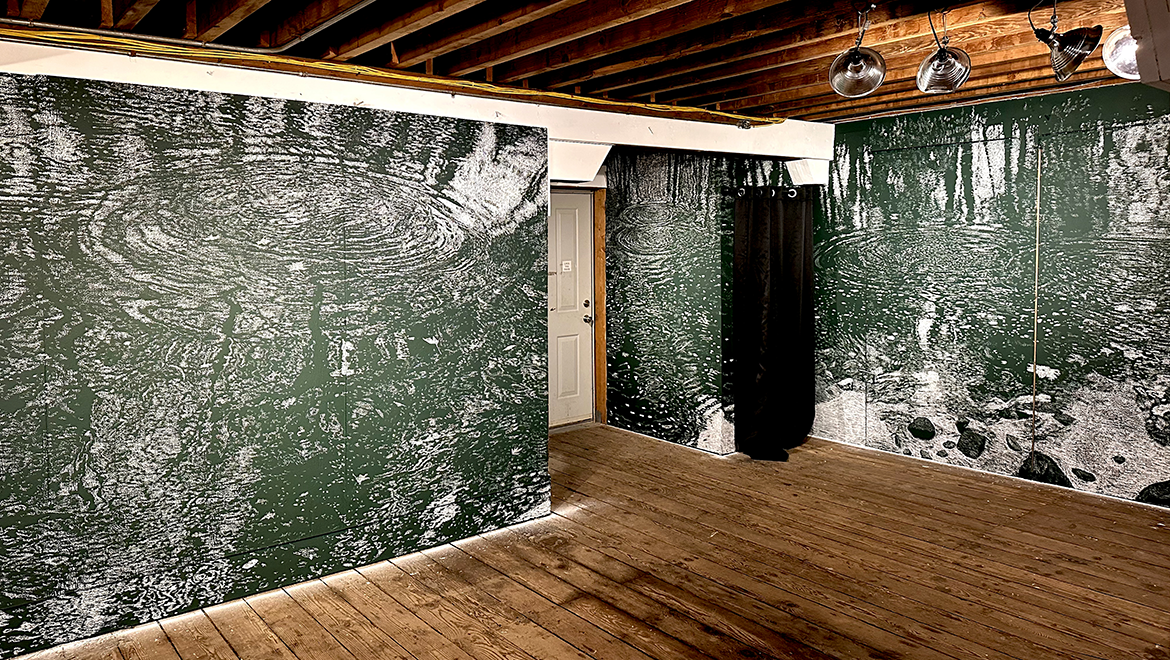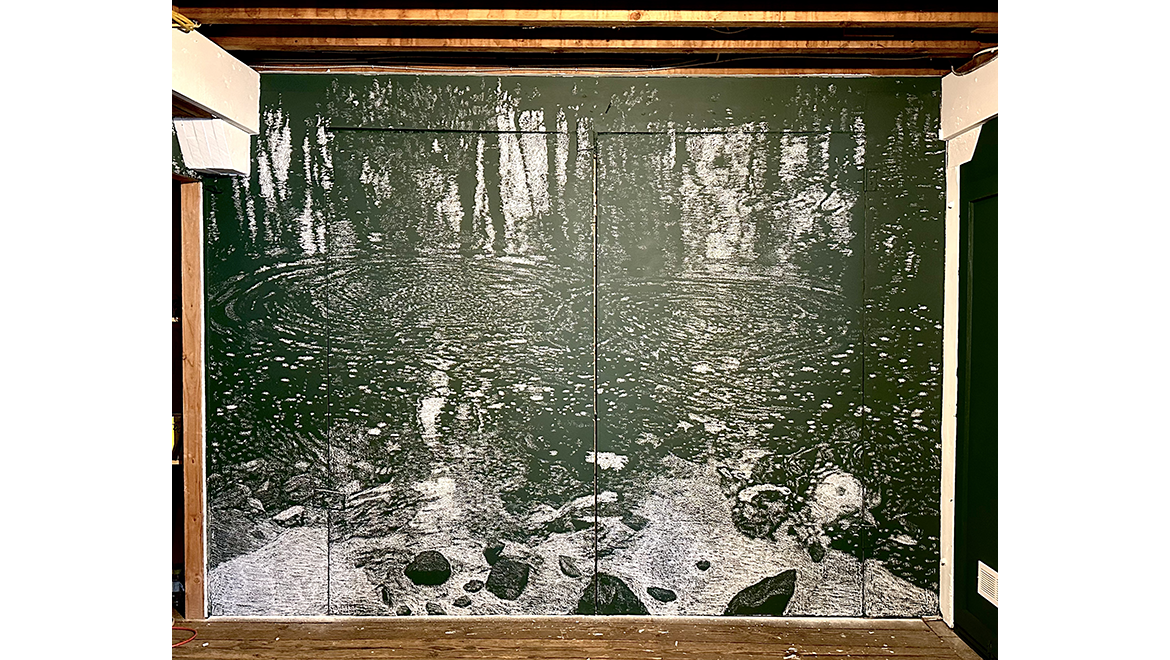And it’s not for the faint of heart. “People get upset that these pieces go away, that they can’t ever see it again once the show is complete,” he said. “Or they touch it to see if it’s really chalk. It very quickly becomes evident that it’s temporary and fragile, but the fact that they might get damaged is part of the conceit of the work and something I accept.”
A master of chalk drawing, Barlow was recently awarded his second NYFA/NYSCA Fellowship in Drawing, one of only 19 New York State artists to receive the $8,000 unrestricted financial award. He previously received it in 2017.
His current research, which the fellowship will help fund, started in Wassaic, N.Y., in 2022 and took him to Chateau d′Orquevaux, in Orquevaux, France, the following year.
Stuck on what to draw for the Wassaic Project in Wassaic, N.Y., he found himself sitting by a nearby mill stream, watching the water flow past him. Inspired, he immersed the viewer in the rising water for his contribution to the project’s show, “No Misery Can Tell, No Word of Farewell.”
“As I was drawing, the ripples made it seem vaguely sentient,” he said. “I was trying to come up with a title and came across the Celtic goddess, ‘Sequana’ — like Susquehanna. And that became the title of my piece.”
He began photographing ripples in the Susquehanna River and other bodies of water, and further research told him that Sequana was the goddess of the river Seine. When he arrived in France, he used time during his residency at Chateau d’Orquevaux to visit the source of the River Seine, where a temple to Sequana was once located.
He made three chalk wall drawings in his studio at Orquevaux, which he erased before leaving.
With water remaining as his muse, he’ll use his fellowship — and a Hartwick faculty research grant — to explore rivers, wells and springs across the United Kingdom, from where his family originally hails.
The work from that residency is destined for an exhibition in South Carolina.
And just as his art is a hit abroad and across the state, it’s also beloved at home. In 2016, he drew a forest of birch trees for We Three, an adaptation of Anton Chekhov’s The Three Sisters by Carmela Marner that has remained on the walls of the Franklin Stage Company in Franklin, N.Y.
“It was my first drawing with birch trees, all from photos I took around here,” he said. “I can’t believe that it’s still up. Faded, but still there.”
